What does the "ZR" on the tail stand for? |
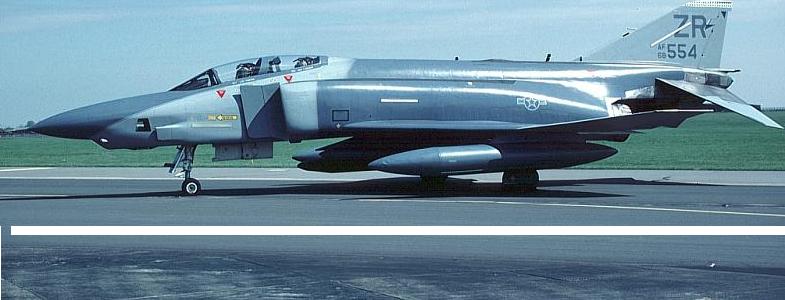
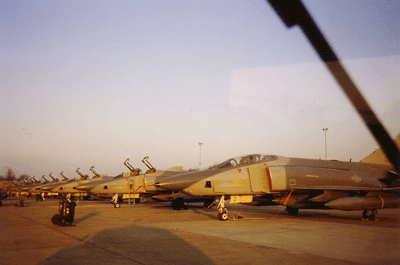
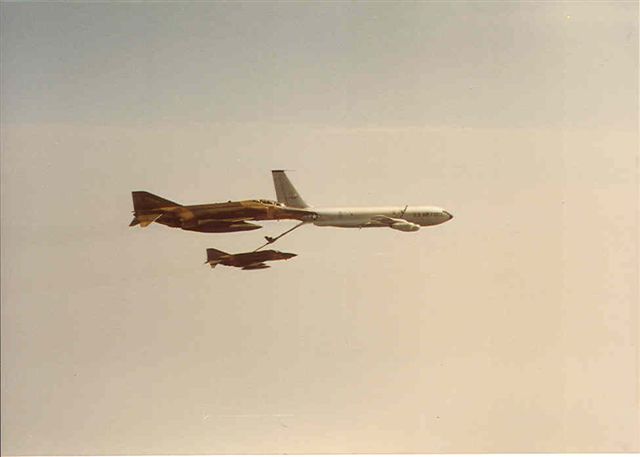
A picture of air-to-air refueling taken by the contributor while on an "Airman of the Quarter" appreciation ride in an RF-4C. These much coveted rides are given as a bonus to enlisted airmen at Zwei who are nominated for outstanding performance and win this highly competative honor. I am jealous. |
photo courtesy of J. Maffett (26th SPS) |

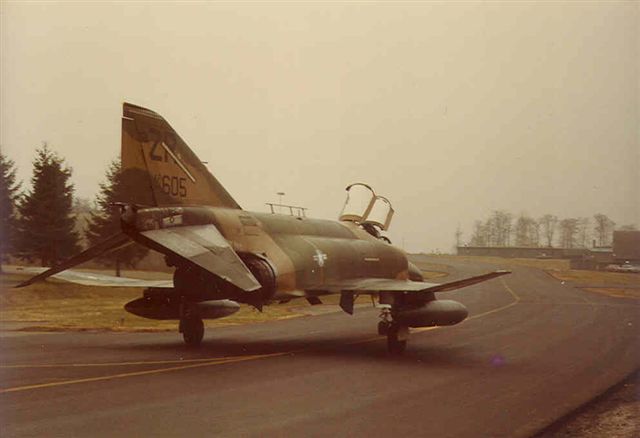
photo courtesy of J. Maffett (26th SPS) |
photo courtesy of J. Maffett (26th SPS) |
McDonnell Douglas RF-4C "Phantom II" SPECIFICATIONS Span: 38 ft. 5 in. Length: 62 ft. 10 in. Height: 16 ft. 6 in. Armament: None. Some later equipped with 4 sidewinder missiles Engines: Two General Electric J-79-GE-15s of 17,000 lbs. thrust each with afterburner Crew: Two Cost: $2,260,000 PERFORMANCE Maximum speed: 1,384 mph Cruising speed: 575 mph Range: 1,632 miles without aerial refueling Service Ceiling: 55,200 ft. In the early 1960s, the USAF recognized the need for more tactical reconnaissance aircraft to reinforce the RF-101s then in service. The Air Force chose a modification of the F-4C fighter. The RF-4C development program began in 1962, and the first production aircraft made its initial flight on May 18, 1964. A total of 499 RF-4Cs were eventually accepted by the Air Force. The RF-4C can carry a variety of cameras in three different stations in its nose section. It can take photos at both high and low altitude, day or night. The RF-4C carries no offensive armament, although during the last few years of its service some were fitted with four AIM-9 Sidewinder missiles for defense. The first unit to fly the RF-4C operationally was the 16th Tactical Reconnaissance Squadron. In October 1965 that unit deployed to Southeast Asia to provide photographic reconnaissance of the growing conflict in South Vietnam. Since then RF-4Cs have been involved in reconnaissance missions around the world, including the Desert Shield/Desert Storm operation in Iraq in 1990-1991. An RF-4C currently on display at the USAF museum at Wright-Patterson AFB was delivered to the USAF on September 9, 1965. It served in Vietnam, Japan, Korea, Europe, Cuba and the Middle East. During Desert Shield/Desert Storm, this aircraft flew a total of 172 missions, more than any other F-4 aircraft. When flown to the USAF Museum in May 1994, it had more than 7,300 hours of flying time (reprinted from information courtesy of the USAF museum) |
Short Brothers C-23 Sherpa Specifications: Contractor Short Brothers PLC C-23A Sherpa C-23B Super Sherpa Power Plant 2 Pratt-Whitney PT6A-45R turboprops 2 Pratt-Whitney PT6A-65AR turboprops Take-off power [Sea level static, uninstalled] 1197 shp 1424 shp Design output shaft speed 1700 rpm 1700 rpm Speed 218mph at 10,000ft range 770 miles with 5000lb payload Span 74ft 8in length 58ft height 16ft 3in Weight Gross 25,500lb max Accomodations Crew of three up to 7000lb of freight, including 4 LD3 containers, and engines the size of F100 series Date Deployed Entered USAF inventory 1984 The C-23B Sherpa aircraft is a light military transport aircraft, designed to operate efficiently, even under the most arduous conditions, in a wide range of mission configurations. The large square-section hold, with excellent access at both ends, offers ready flexibility to perform ordnance movement, troop & vehicle transport, airborne/airdrop missions, medical evacuation and is suitable for conversion to other specialist duties such as maritime or land surveillance. Configured as a troop transport, the Sherpa provides comfortable, air-conditioned seating for 30 passengers, features "walk about" headroom, a removable latrine unit, and has a 500 lb capacity / 345 cu. ft. baggage compartment located in the nose of the aircraft. Additional space for a 600 lb capacity optional baggage pallet is provided on the rear ramp of the aircraft. During airborne operations, the aircraft accommodates 27 paratroopers. Optionally, it can be outfitted to handle up to 18 stretchers plus 2 medical attendants. The airplane meets Army Short Take-off & Landing guidelines (STOL), can operate from unpaved runways and is equipped with self-contained ground handling equipment. Operational experience with this remarkable aircraft has proven it to have low maintenance costs and low fuel consumption. |

There were many aircraft flown at Zweibrucken AB throughout it's history dating back from the 1950's. Aircraft of every type, make, country and mission have touched down at Sunny Zwei at one time or another. In this section I will strive to provide information on the birds assigned to Zweibrucken during it's waning years. |
What does the "ZR" on the tail stand for? |
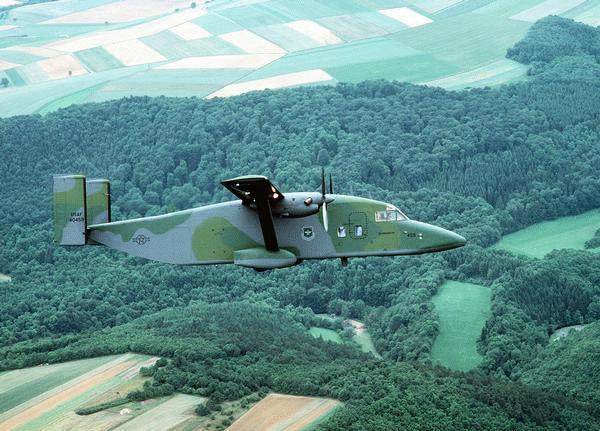
uncredited photo |
Badger 1990 |